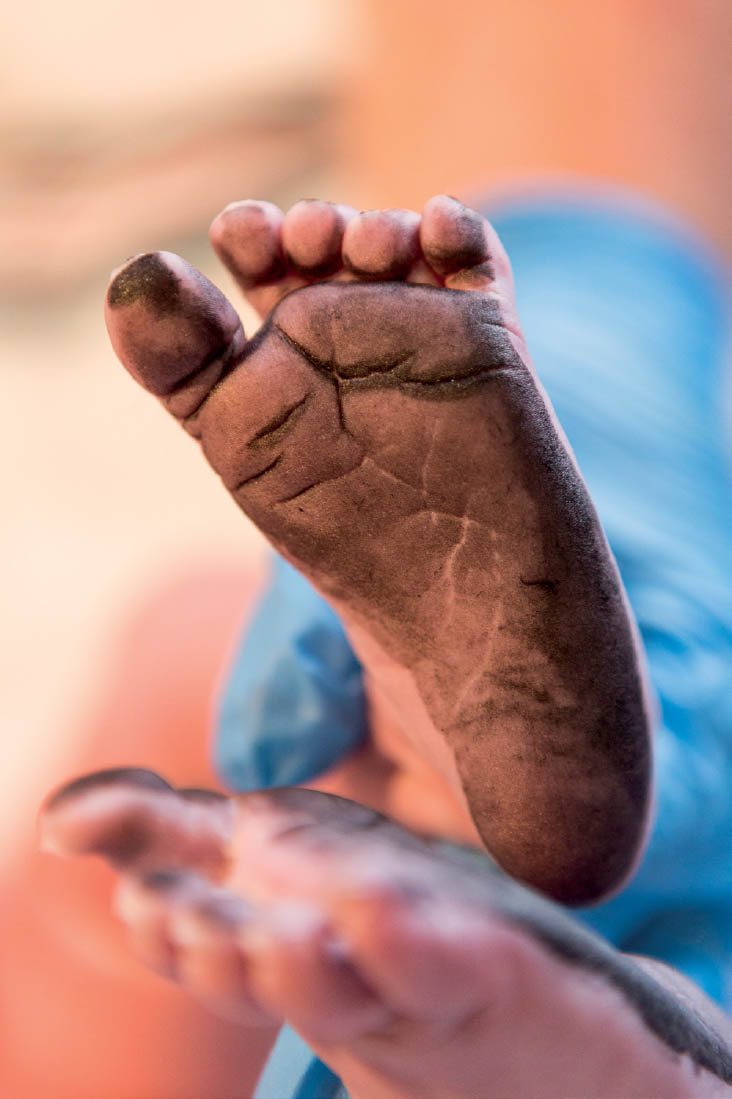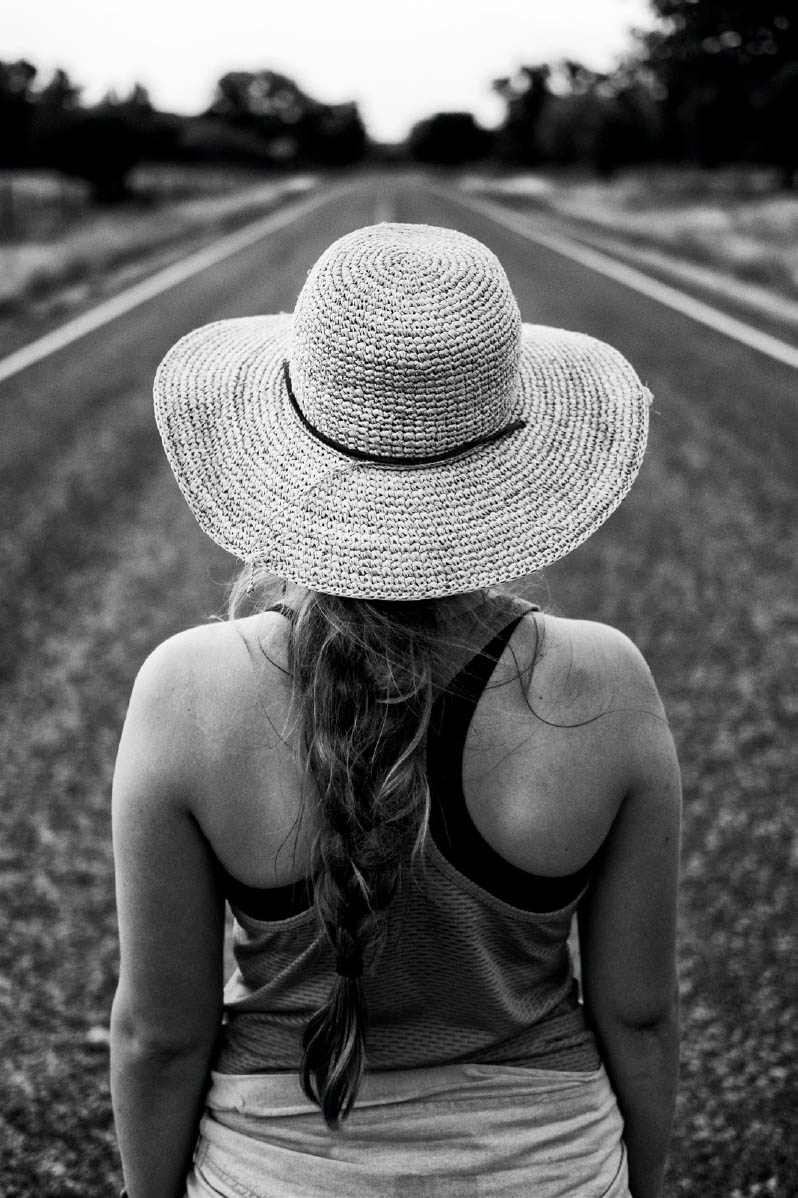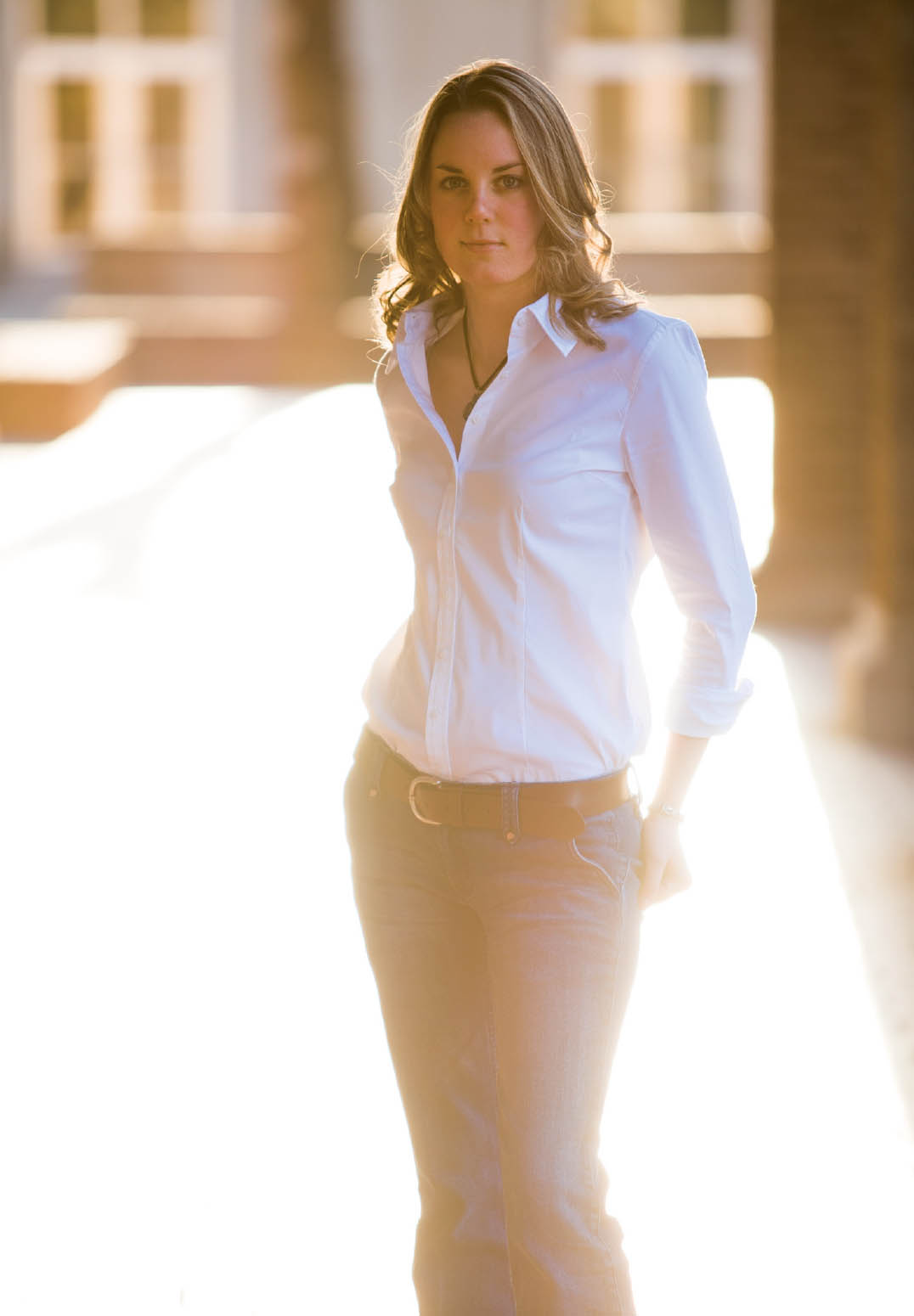55. BREAK THE RULES
![]()
YEP, THAT’S RIGHT. Break. The. Rules.
All of the tips and techniques highlighted up to this point—focusing on the eyes, following the rule of thirds, having the subject face the camera, etc.—are rules that can be broken. While we recognize the benefits these “rules” have in making and viewing images, they can get in the way. What if the most important component of your portrait composition is, say, the feet? Do you focus on them instead of the eyes (Figure 55.1)? Do you even include the eyes? Is that even a portrait? Does it matter? Make the shot because you want to, or because you believe it will be a significant representation of your subject. If you want completely undivided attention directed toward your subject, place them in the middle. Use elements around them to further direct the eye toward the middle of the frame. If you want to highlight a quirky personality, follow your subject’s lead—cover up their face (Figure 55.2). Perhaps having them face away from the camera is a great way to exhibit something eclectic about them (Figure 55.3). Ultimately, the point is to tell a visual story, and breaking these rules we’ve been conditioned to use is sometimes a nice jolt to our creative process. It also gives the viewer a better understanding of your subject.
The rules, however, are still worth “following” and using as constructive guidelines within which our creativity can flourish. So, although breaking the rules can be a nice change-up, it might not be beneficial on a frequent basis. Find the appropriate moments, composition, or lighting to make a break really work for you. Doing so will make the times in which breaking photographic rules is creative and narratively necessary.
55.1 One of my favorite portraits of my youngest daughter is of her tiny feet after her footprint was taken, minutes after she was born.
ISO 1600; 1/100 sec.; f/2.8; 70mm
55.2 Placing the leaf in front of the subject’s face was all her idea. Sometimes the face isn’t the strongest indicator of a personality; sometimes it’s what serves in its place.
ISO 200; 1/80 sec.; f/3.5; 85mm
55.3 Anna Claire is one of the most focused and driven young adults I know, with great aspirations for mission work and travel. Having her face away and down the road seemed appropriate for a couple portraits, indicating her curiosity and intention to move forward in life.
ISO 200; 1/120 sec.; f/2; 35mm
Content Over Technique
When we get down to it, the content of an image ultimately trumps all of the visible technique. Non-photographers (which happen to comprise the majority of people taking pictures in the world) often don’t know, and frankly, probably don’t consider how a great-looking portrait is made. They are drawn to the image because of that special something that we, as photographers, must capture and exhibit. Sometimes the best thing to do is to let our technique take a backseat to our subject.
The best shot in a session may be an accidental image, a candid laugh, or a deeply interesting facial expression. Perhaps the best image is slightly out of focus, yet captures something so unique in the subject’s face that it could never be naturally re-created. It never ceases to amaze me when I show clients images, and they often gravitate to images that I would not necessarily choose as a favorite. They are usually focused on content, how they or someone in the image looks, and what they are doing in the shot instead of in how difficult it was to create a particular portrait.
This, however, is no excuse to slack on your technical skills and portrait techniques. Rather, it is a directive to strengthen your skills in order to always be prepared to make an image that really capitalizes on the content (Figure 55.4). Again, let the technique go quiet. It’s still there, helping “make” the image.
55.4 Upon reviewing the first image leading up to this portrait, I worried about the overexposure and wrap of light around the subject’s body. However, I was drawn to the light and how she held herself in that location. In the end, the technical “flaws” of the image only heightened the significance of the subject.
ISO 100; 1/200 sec.; f/2.8; 200mm




